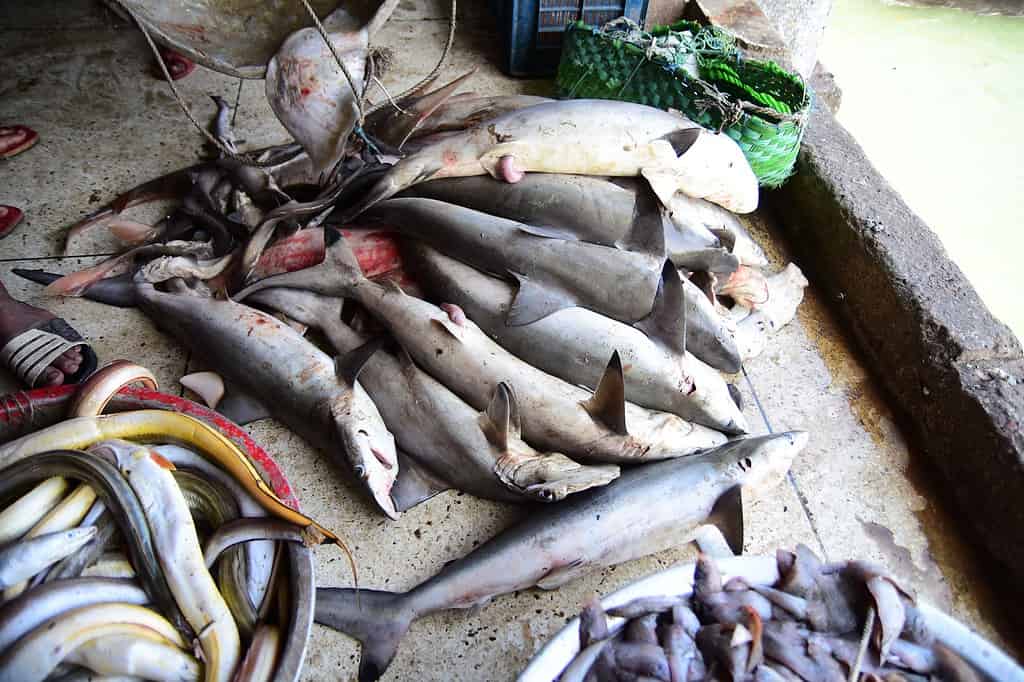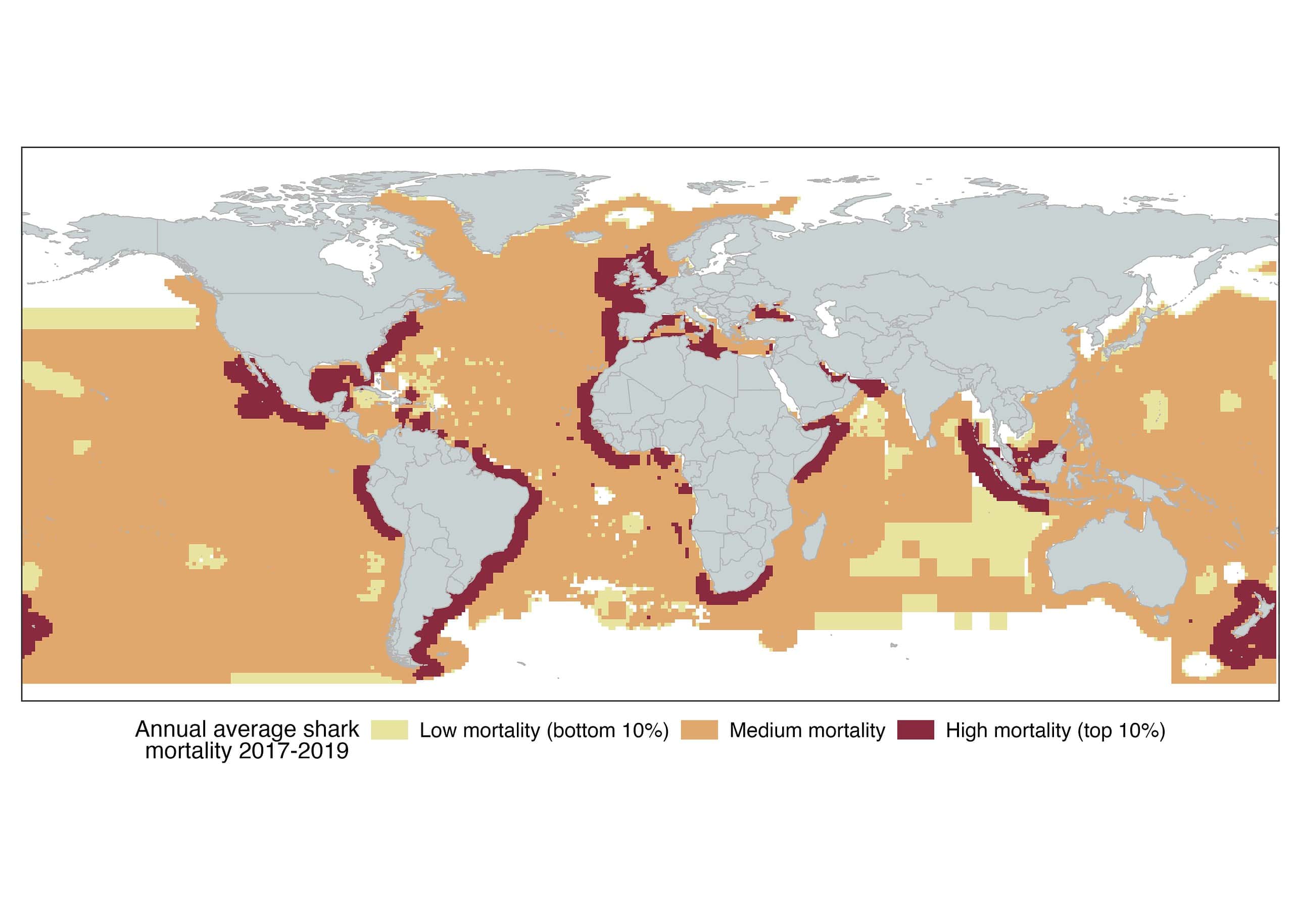
Sharks, the ocean’s formidable predators, have thrived for over 400 million years, outliving five mass extinctions. Sharks are even older than trees or Saturn’s rings. Yet, today, they face an unprecedented threat from human activities.
Despite the introduction of international regulation aimed at reducing shark catch and finning over the last decade, a new study found that this ancient lineage continues to be caught at increasing rates. While regulation has worked in some places, globally shark mortality steadily increased by 4% between 2012 and 2019 in coastal fisheries, which account for 95% of all killed sharks.
“We show that widespread legislation designed to prevent shark finning was successful in addressing this wasteful practice but did not reduce mortality overall,” said lead author Boris Worm, a research professor in the Department of Biology at Dalhousie University in Nova Scotia.
“Too many sharks are still dying; this is especially worrisome for threatened species such as hammerheads.”
From fins to meat
Historically, sharks have been fished by the millions for their valuable fins, a high-value commodity particularly sought after in Asian markets, while the rest of the carcass was discarded. In response, certain countries and jurisdictions have enacted full or partial bans on finning. Nearly 70% of maritime jurisdictions across the world ban or prohibit in some way finning, whereas little or any such regulation existed only 20 years ago.
For instance, the United States has some of the most rigorous shark management measures globally under the Magnuson-Stevens Fishery Conservation and Management Act (MSA). The MSA includes key laws such as the Shark Finning Prohibition Act of 2000 and the Shark Conservation Act of 2010 effectively ban shark finning, requiring that sharks be brought to shore with fins naturally attached,
While these regulations are welcomed and useful, the problem is that commercial operators have adapted. Many distribute entire shark carcasses now, a lucrative practice due to an expanding demand for shark meat. In fact, the shark meat industry ($2.6 billion) has grown much larger than the shark fin market ($1.5 billion).
This shift in demand, especially in top-importer countries like Brazil and Italy, complicates the issue further, as shark meat becomes a cheaper substitute for other fish. In many situations, shady distributors don’t properly disclose the contents of their fish food. So many consumers suddenly have shark on the menu without them even being aware.
For instance, when shark meat is displayed in Brazilian supermarkets as steaks or filets or offered on a restaurant menu, it’s often just labeled as cação, which is an umbrella term for “ocean fish” or “white fish.” Elsewhere, shortfin mako was found in U.S. pet food, not long after the species was designated as “endangered” by the International Union for Conservation of Nature. In Britain, a study found that almost 90 percent of the fried fish sampled at dozens of fish-and-chip shops contained meat from Spiny dogfish, another threatened shark species.
Shark deaths increase despite more regulation
In their new study, an international team of researchers used a combination of catch data, stock assessments, and life history information to assess global shark mortality.

The main findings include a significant increase (4%) in shark fishing mortality, from an estimated 76 million in 2012 to 80 million in 2019, despite regulatory efforts to protect sharks. The increase was primarily in coastal waters, with a decrease observed in pelagic fisheries (7% decrease).
The study identifies Indonesia (~15 million killed sharks annually), Malaysia (7.2 million), and Brazil (6.6 million) as the top three countries contributing to global shark mortality. The reasons for this include a combination of high demand for shark products, such as fins and meat, and the presence of large, unregulated or poorly regulated fisheries. These countries have extensive coastal and high-seas fishing operations, which contribute significantly to the overfishing of sharks.
“The unsustainable fishing of sharks is an unsolved global problem of staggering proportions that could eventually lead to the extinction of some of our planet’s most ancient and revered species,” senior author Darcy Bradley, an adjunct faculty member at the University of California Santa Barbara and a scientist with the Nature Conservancy in California, said in a press release.

“We found that despite myriad regulations intended to curb shark overfishing, the total number of sharks being killed by fisheries each year is not decreasing. If anything, it’s slightly increasing.”
This all goes to show that merely targeting shark finning is insufficient. Effective conservation requires a multi-faceted approach, including area-based protective measures, specific fishing regulations such as mandating the release of threatened shark species, and greater accountability in fishing practices. Moreover, it calls for improved transparency and reporting in shark fisheries, essential for evaluating the effectiveness of regulations and safeguarding these ancient mariners.
The findings appeared in the journal Science.






